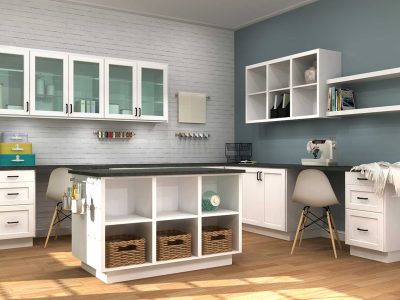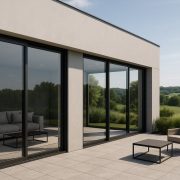Choosing the right window material can reshape how your home looks, feels, and performs for decades. Aluminum windows have earned a reputation for delivering a clean modern aesthetic and reliable durability, but they are not a one-size-fits-all answer. This guide examines the advantages and trade-offs that matter in real-world residential renovations, from structural strength to thermal performance and acoustic comfort. You’ll learn how aluminum frames support large, airy openings and what to expect in terms of insulation and upkeep. For homeowners comparing products and specs, you’ll also find practical guidance on thermal breaks, glazing choices, and where to go for More Info before you finalize a purchase.
Why Aluminum Frames Remain Popular in Modern Architecture
Aluminum frames are favored in contemporary home design because they enable *sleek*, narrow profiles that maximize glass area and daylight. The metal’s inherent strength supports taller and wider openings without bulky mullions, preserving sightlines and emphasizing clean geometry. Designers also appreciate the extensive palette of finishes, from anodized tones to durable powder coats, which makes it easy to harmonize windows with exterior facades and interior trim. Because aluminum is highly recyclable, many projects highlight its sustainability profile alongside its aesthetic benefits. For homeowners prioritizing a modern look with minimal visual clutter, aluminum often strikes the best balance of design freedom and practicality.
Design Benefits Homeowners Notice
Beyond appearance, aluminum’s fabrication versatility allows for complex shapes, thin meeting rails, and consistent reveals across window and door systems. That consistency creates a cohesive language throughout a renovation, particularly in open-plan homes that rely on uninterrupted glass to connect rooms and views. Many systems integrate seamlessly with contemporary features such as pocket sliders, multi-panel doors, and corner windows with minimal posts. When paired with the right glazing, aluminum frames can meet stringent energy codes while maintaining the *slim sightlines* that define modern architecture. For those evaluating multiple materials, the way aluminum blends engineering precision with visual lightness is a key reason it remains a mainstay in design-forward renovations.
Strength and Longevity in Large-Panel Window Designs
Large sliding walls and picture windows impose significant structural demands, especially in regions with wind loads or seismic considerations. Aluminum’s high strength-to-weight ratio enables wider spans, taller panels, and tighter tolerances than many alternative materials. That capability reduces the need for additional framing elements that would otherwise obstruct the view or add mass. Over time, aluminum resists warping or swelling, which helps maintain smooth operation in large sashes where even slight movement could cause binding. For homeowners seeking expansive glass areas with dependable performance, aluminum stands out as a robust, low-deformation solution.
Engineering Details That Matter
Longevity depends on more than the base material; fabrication quality, joint construction, and surface finish all affect service life. Factory-corner keys, reinforced sash profiles, and quality hardware prevent racking and air leakage as assemblies age. A powder-coated finish or architectural anodizing adds a resilient outer layer that resists UV degradation and corrosion, crucial for coastal or high-sun environments. Regular but minimal maintenance—like clearing drain holes and lubricating rollers—keeps large panels running smoothly even as seasons change. When weighing Pros And Cons Aluminum Windows for bigger openings, these engineering details often determine whether the system delivers decades of trouble-free use.
Understanding the Thermal Drawbacks of Aluminum Construction
While aluminum excels in strength and precision, it is a highly conductive metal, which means it readily transfers heat and cold. Without mitigation, that conductivity can increase heating and cooling loads and undermine comfort near the glass during extreme weather. In colder climates, frames that lack insulation can create cold interior surfaces, potentially contributing to condensation under the right humidity conditions. In hotter regions, conductive frames can warm up quickly, raising interior temperatures near window perimeters. This does not mean aluminum is a poor choice—only that understanding its thermal behavior is essential to making an informed decision.
Where Performance Can Fall Short
Thermal bridging is the primary culprit, and it affects not only energy bills but also perceived comfort and moisture management. In older or basic aluminum products, the frame acts as a direct path for heat flow, which can lower overall system performance even if the glass is efficient. Upgrading to thermally improved frames and higher-spec glazing can significantly alleviate these issues, but quality varies widely among brands. As you compare Pros And Cons Aluminum Windows, pay attention to certified performance values and climate-appropriate configurations rather than marketing terminology alone. Evaluating ratings and construction details side by side clarifies whether a product’s thermal limits align with your home’s design goals and local conditions.
How Thermal Breaks Reduce Heat Transfer in 2025 Models
Modern aluminum frames employ a thermal break—a non-metallic barrier between interior and exterior frame sections—to reduce heat flow. This design interrupts the conductive pathway of aluminum, boosting insulation and improving surface temperatures on the room side of the frame. Today’s thermal breaks often use robust polyamide strips or advanced pour-and-debridge processes that preserve structural integrity while adding thermal resistance. Multichamber profiles, foam inserts, and improved gasket systems complement the break, minimizing convective loops inside the frame. When combined with low-emissivity glazing and gas fills, these improvements allow aluminum assemblies to reach performance levels that were difficult to achieve a decade ago.
What to Look For in Product Specs
When reviewing specifications, focus on certified performance metrics rather than assumptions. Ratings such as U-factor, solar heat gain coefficient, and air infiltration provide a clearer picture of how the entire unit will perform once installed. Check for warm-edge spacers, insulated sills, and frame designs that incorporate deep thermal breaks rather than thin separators. Independent certifications and labeling can help you compare apples to apples; manufacturers’ technical sheets and industry directories are useful starting points if you need More Info. In practice, well-engineered 2025 models can pair the precision and aesthetics of aluminum with thermal outcomes that satisfy stringent codes and comfort expectations.
Noise Reduction and Insulation Improvements With Glazing
Acoustic comfort is often underappreciated in window selection, yet it can significantly influence daily life, particularly in urban or high-traffic areas. Aluminum frames can be part of a quiet home when matched with the right glazing configuration. Laminated glass with acoustic interlayers dampens sound transmission, while varying pane thicknesses disrupt resonant frequencies. Airspace depth between panes and high-quality seals further support sound reduction by limiting vibration and air leakage. Together, these features can create a perceptible difference in bedrooms, home offices, and living areas close to exterior noise sources.
Glazing Configurations for Quieter Rooms
Not all “double-pane” solutions perform equally for noise. Asymmetrical double glazing—where panes have different thicknesses—can improve attenuation across a wider range of frequencies than symmetrical builds. Laminated glass layers add damping without substantially increasing visual thickness, making them ideal for maintaining slim profiles. Upgrading to triple glazing can offer additional benefits in select scenarios, but proper spacers, sealants, and frame isolation still matter as much as pane count. When evaluating acoustic claims, look for test data and ratings, and consider targeted upgrades in rooms where quiet is most critical rather than blanket upgrades throughout the home.
Maintenance Requirements and Finish Longevity Explained
Many homeowners assume metal frames require high maintenance, but quality aluminum systems are largely hands-off if installed and finished correctly. Routine cleaning with mild soap and water keeps frames looking new and prevents abrasive grit from affecting sliders or gaskets. Drainage paths should remain unobstructed so that water evacuates efficiently during storms. Anodized and high-grade powder-coated finishes are engineered to resist chalking and fading, particularly in sun-exposed facades. In coastal zones, periodic rinsing helps remove salt deposits and preserves corrosion resistance over time.
Care Tips That Extend Service Life
Proactive care ensures smooth operation and prolongs finish integrity. Inspect weatherstripping annually and replace it if compressed or brittle to maintain airtightness and energy performance. Lightly lubricate hinges, rollers, and locks with manufacturer-approved products to prevent wear, especially on large or frequently used panels. Avoid harsh chemicals or abrasive tools that can damage seals or mar an otherwise resilient surface coating. With these simple steps and the inherent durability of aluminum, homeowners can expect a long service life and stable appearance even in demanding climates.
Balancing Aesthetics, Cost, and Energy Performance
Budget decisions for windows involve more than the initial price tag; they also reflect long-term comfort, durability, and resale appeal. Aluminum often sits in the middle to upper tier for upfront cost, but its structural stability and finish longevity can lower repair and replacement expenses. If expansive glass areas or minimalist frames are priorities, aluminum’s capability can eliminate additional framing or support, which may offset part of the premium. Energy performance depends on pairing the right frame technology with appropriate glazing for your climate. An honest look at needs, constraints, and goals will clarify whether aluminum’s benefits align with your renovation strategy.
Decision Framework for Renovators
Start by ranking what matters most—thermal efficiency, sightlines, operability, or acoustic control—and compare options against those priorities. Evaluate certified performance data and verify that components such as warm-edge spacers, deep thermal breaks, and low-e coatings work together in your chosen system. Consider the whole-home effect: strategically investing in high-performance units for west-facing walls, bedrooms, or large openings can deliver outsized comfort gains. As you map the Pros And Cons Aluminum Windows to your project, weigh total life-cycle cost rather than price alone to capture durability, maintenance, and energy impacts. If you need More Info to finalize choices, request detailed spec sheets and third-party ratings so your decision rests on evidence, not assumptions.












Comments